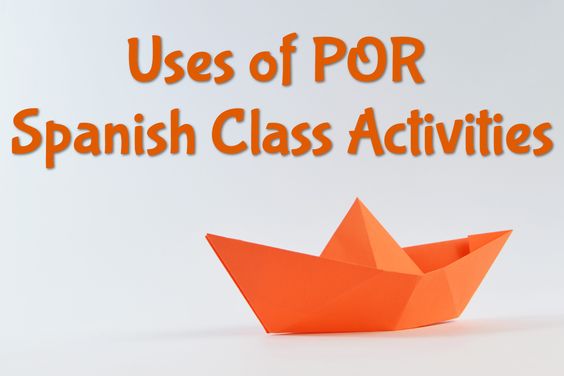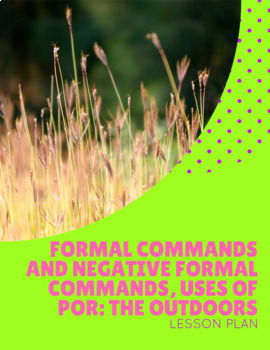
The word “por” in Spanish can have many different uses depending on the context. Here are some of the most common uses:
- Expressing cause or reason: “Lo hizo por amor” (He did it out of love).
- Expressing duration of time: “Estuve esperando por tres horas” (I was waiting for three hours).
- Expressing a means of communication or transportation: “Me comuniqué con ella por teléfono” (I communicated with her by phone).
- Expressing gratitude: “Gracias por la ayuda” (Thank you for the help).
- Expressing an exchange or substitution: “Te doy mi bicicleta por tu patineta” (I’ll give you my bike for your skateboard).
- Expressing a method or way of doing something: “Cocina el arroz por diez minutos” (Cook the rice for ten minutes).
- Expressing a goal or purpose: “Estudio por obtener un buen trabajo” (I study in order to get a good job).
- Expressing a general location or approximation: “Voy por el centro de la ciudad” (I’m going through the city center).
- Expressing a passive action or state: “El libro fue escrito por García Márquez” (The book was written by García Márquez).
- Expressing an exchange rate: “El dólar está a 20 pesos por dólar” (The dollar is at 20 pesos per dollar).
These are just some of the most common uses of “por” in Spanish, and there are many more depending on the context.
Spanish Lesson Pland and Resource Sheet
Next is a lesson plan for Spanish 2 and a resource sheet with additional materials to support your classes:
 Formal Commands and Negative Formal Commands, Uses of POR: The Outdoors Lesson Plan for Spanish 2
Formal Commands and Negative Formal Commands, Uses of POR: The Outdoors Lesson Plan for Spanish 2
By the end of this lesson, students are able to give and react to affirmative and negative commands expressing nuances of formality with verbs that they are familiar with. They will be also able to ask and answer questions relating to outdoor activities using common expressions.
Objectives:
With this lesson, students will be able to…
- describe certain outdoor activities using common expressions.
- take notes from audio/video about certain outdoor activities.
- write simple descriptions of certain outdoor activities that are familiar to them.
- give both formal affirmative commands and formal negative commands in their writing.
- give and react to both affirmative and negative commands expressing nuances of formality with verbs that they are familiar with.
- ask and answer questions relating to outdoor activities using common expressions.
- understand basic descriptions of certain outdoor activities and can identify what the descriptions are referring to, i.e., what activities are being described.
- understand formal commands given to me using common verbs.
- read and understand instructions containing formal commands that are both in affirmative and negative forms.
- read and understand common expressions that relate to outdoor activities.
This Spanish lesson plan includes: ACTFL Standards, Can-Do Statements, Handouts and worksheets, warm-up, Exit Ticket, and assessment.
